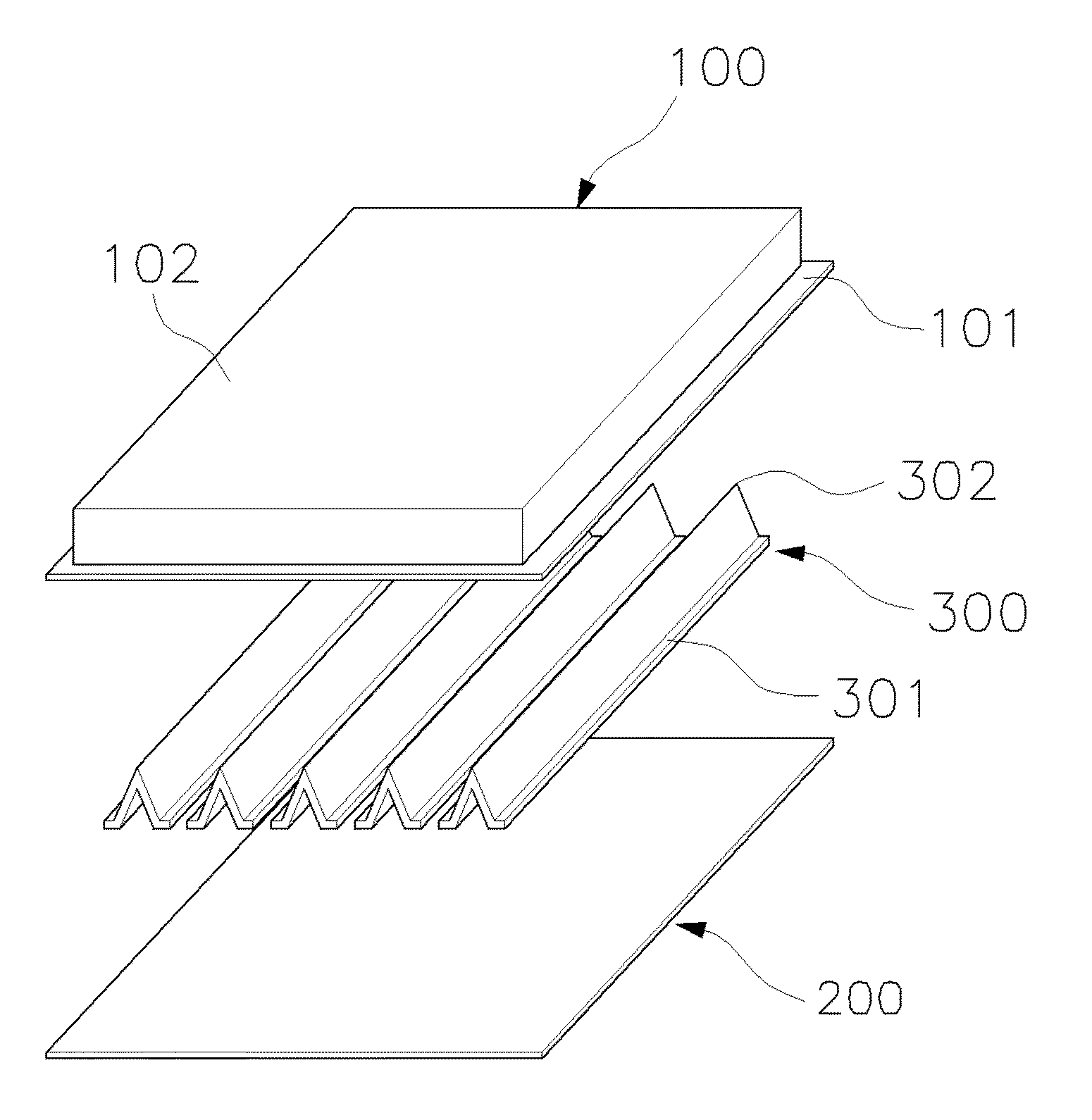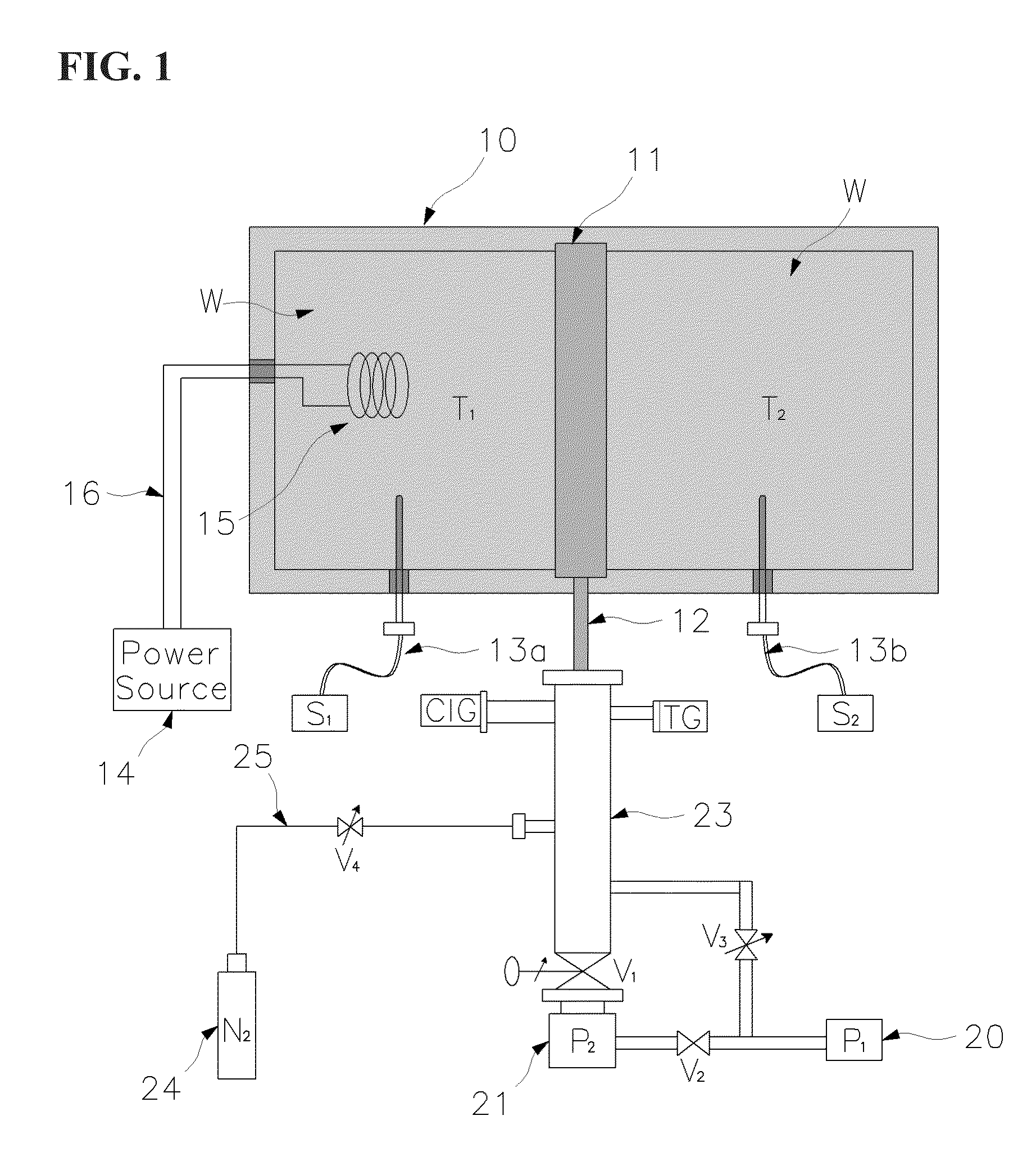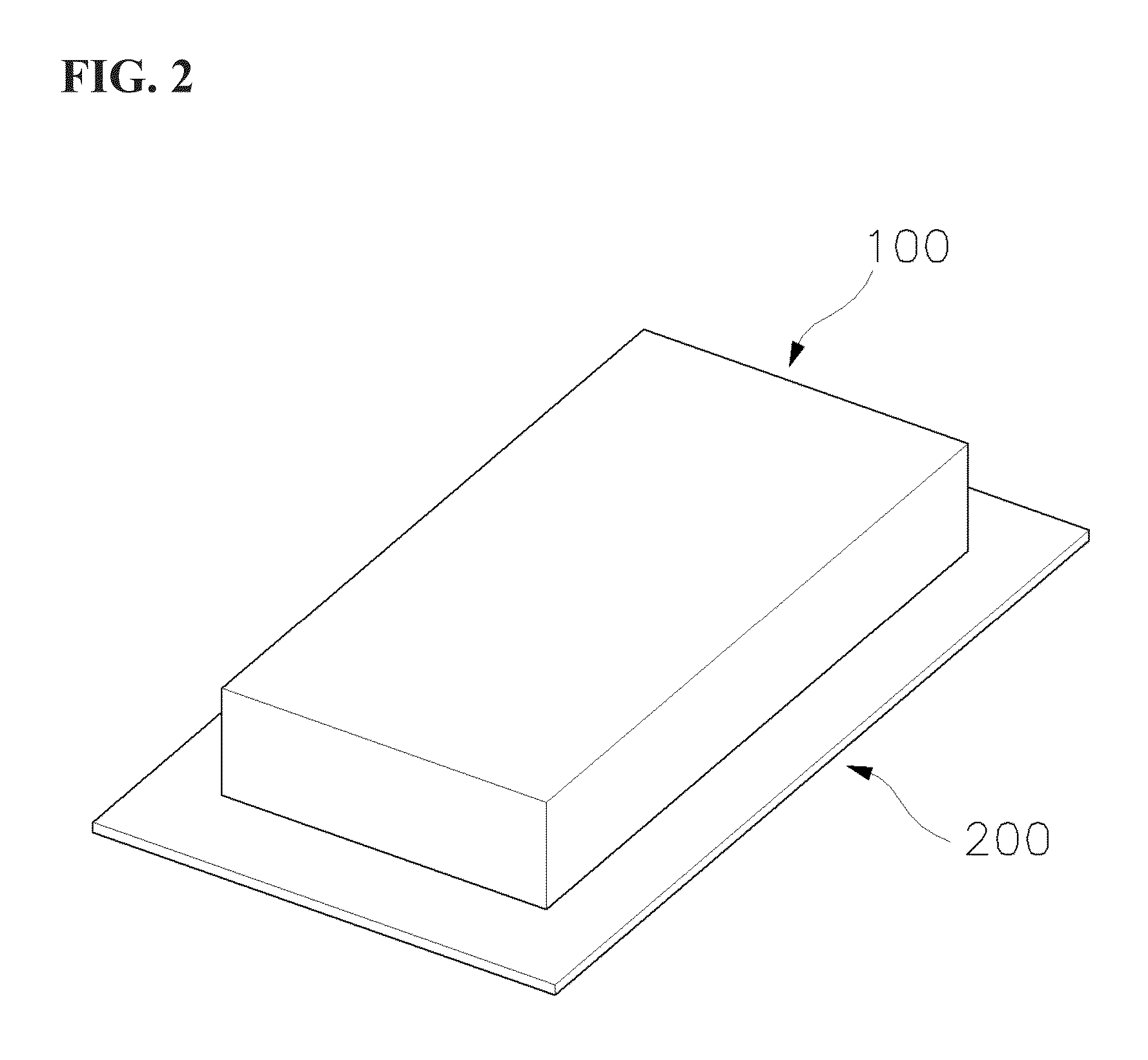Vacuum insulation panel
a vacuum insulation and panel technology, applied in heat-proofing, transportation and packaging, mechanical equipment, etc., can solve the problems of reducing the insulation performance of the panel, and reducing the insulation performance of the conventional vacuum insulation panel, etc., to achieve the effect of preventing deformation, preventing deformation, and preventing deformation
- Summary
- Abstract
- Description
- Claims
- Application Information
AI Technical Summary
Benefits of technology
Problems solved by technology
Method used
Image
Examples
examples
[0075]The following examples illustrate the invention and are not intended to limit the same.
[0076]To assess the insulation characteristics of the vacuum insulation panels according to the present invention, thermal conductivity with respect to the degree of vacuum was measured using the device shown in FIG. 1. A vacuum insulation panel according to the present invention was prepared. For comparison, an insulation panel filled with glass wools and an insulation panel having a thick stainless steel plates between which no filler is filled were prepared.
[0077]1. Comparison of Thermal Conductivity
[0078]1) Device (FIG. 1)
[0079]A insulation box (10) includes a high temperature section (H) and a low temperature section (C). The temperature of the high temperature section (H) can be changed by using a heater and maintained at a certain temperature. The temperature (T1) of the high temperature section (H) and the temperature (T2) of the low temperature section (C) are measured by a temperat...
PUM
 Login to View More
Login to View More Abstract
Description
Claims
Application Information
 Login to View More
Login to View More - R&D
- Intellectual Property
- Life Sciences
- Materials
- Tech Scout
- Unparalleled Data Quality
- Higher Quality Content
- 60% Fewer Hallucinations
Browse by: Latest US Patents, China's latest patents, Technical Efficacy Thesaurus, Application Domain, Technology Topic, Popular Technical Reports.
© 2025 PatSnap. All rights reserved.Legal|Privacy policy|Modern Slavery Act Transparency Statement|Sitemap|About US| Contact US: help@patsnap.com



